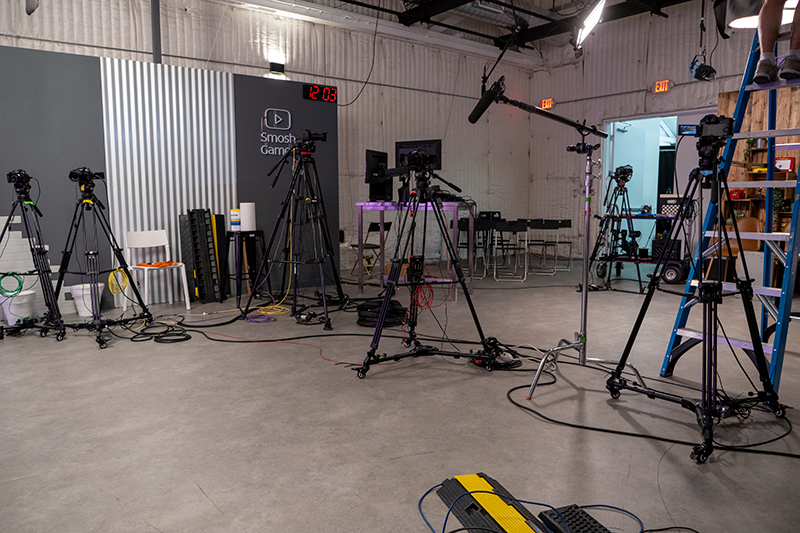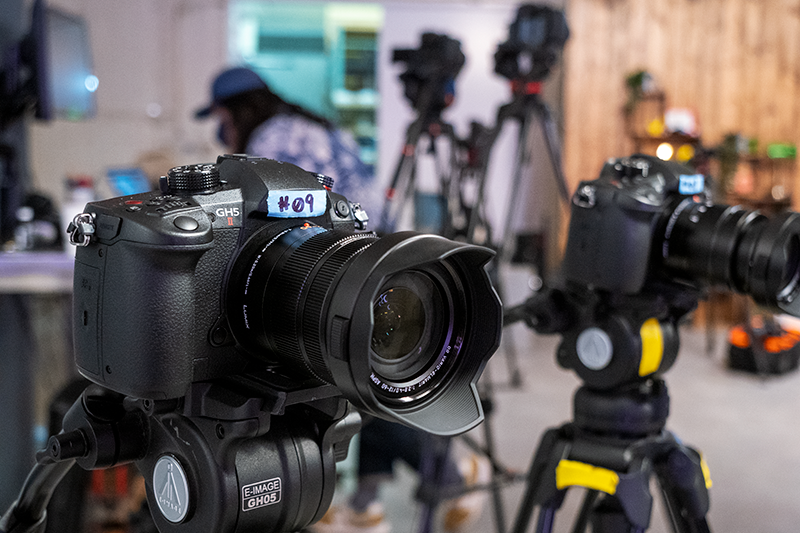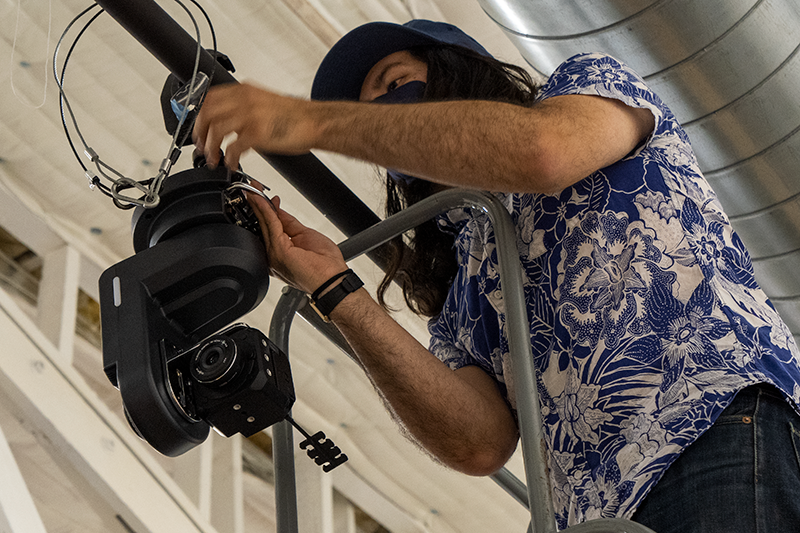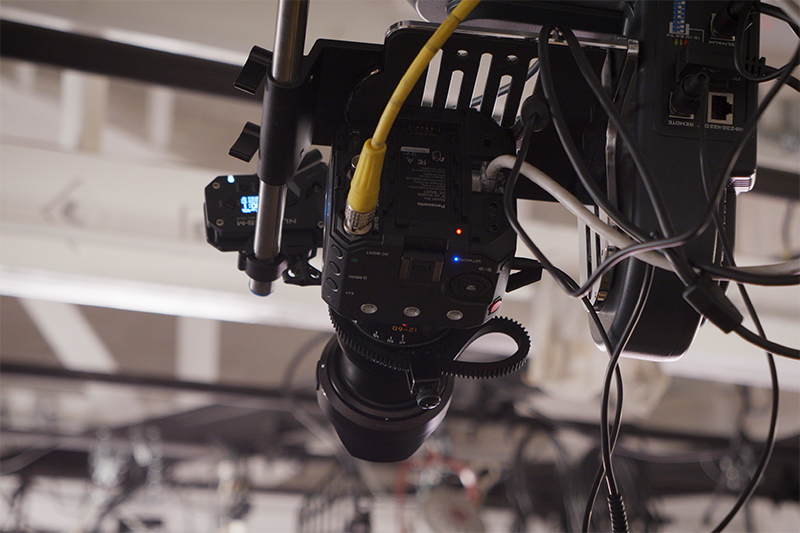Smosh employs LUMIX cameras used for livestream
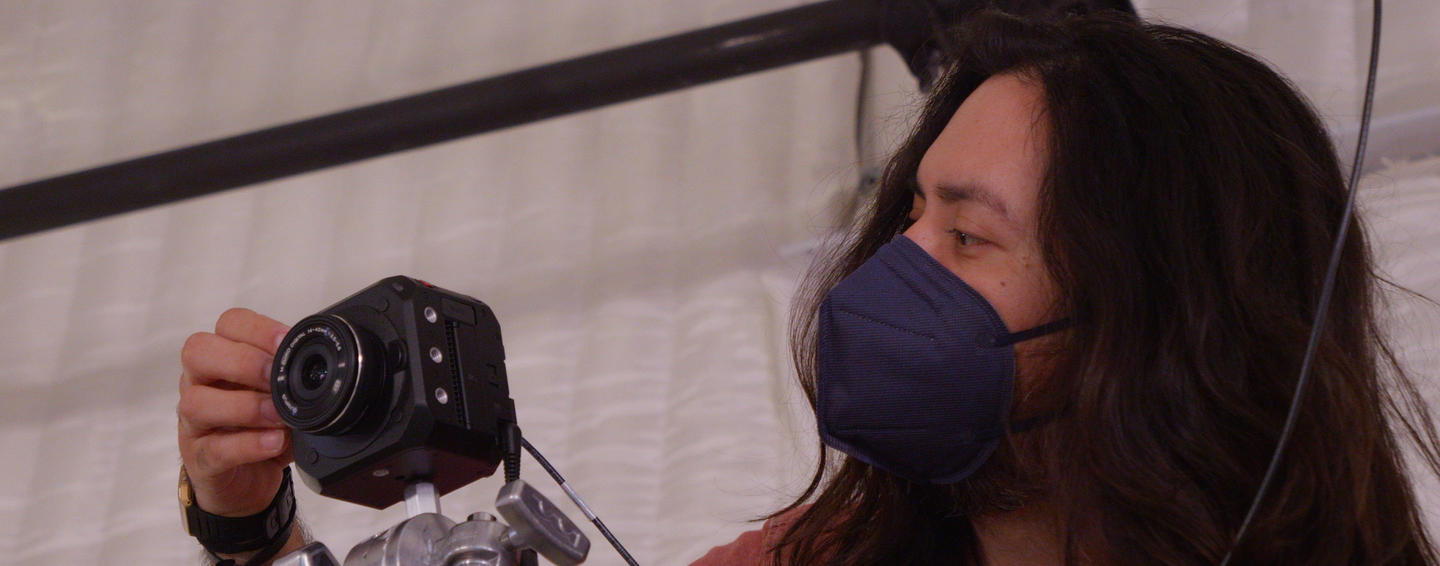
Smosh employs LUMIX cameras for livestream
"Smosh: Under the Influence" uses 13 LUMIX GH5M2 and two BGH1 cameras for live sketch comedy show
In 2002, Internet personality Anthony Padilla created a website, smosh.com, to post Flash animations. He was joined by his friend, Ian Hecox, and they began posting videos to YouTube in 2005. Smosh quickly became one of the most popular channels on YouTube and now has over 40 million subscribers and over 10 billion views making it the largest comedy brand on the Internet. Currently Smosh has several YouTube channels, including Smosh Pit, Smosh Games, and El Smosh.
On June 30, 2022, Smosh produced its first live stream since 2016 with Smosh: Under the Influence, broadcast on interactive video platform Kiswe. The sketch and variety show, was shot and livestreamed by Director of Photography Brennan Iketani and Technical Director Mark Raub, utilizing 13 LUMIX GH5M2 mirrorless cameras and two BGH1 box cameras to capture the live show across four sets on two stages.
For Smosh: Under the Influence, a number of LUMIX GH5M2 cameras are lined up on Smosh's Game Stage for live capture
For the livestream, Iketani’s main goal was to create a primetime television variety look and felt that the GH5M2 and BGH1 cameras were ideal for the job. “The Micro Four Thirds sensor gives us much deeper depth of field, which is helpful for improvisational comedy,” explained Iketani. “You don’t run the risk of losing focus that you would with a larger sensor.”
GH5M2 – Out-Of-The-Box Flexibility
According to Raub, the livestreams are bound to their streaming platform, so they output FHD (1920x1080) at 30p through the cameras' HDMI Out port. “These cameras give us the flexibility to bring that all the way up to 4K when we’re recording to the SD card but to output at 1080p for the livestream,” he explained.
Since there is no post color grade for the livestreams, Iketani goes with the GH5M2's Standard Picture Profile due to its “nice Rec709 feel right out-of-the-box,” he said. “There's never enough time to build a look in-camera, especially if we're streaming live. We need to have the look already built into the camera.”
For a live production with no post color grade, DP Brennan Iketani uses the GH5M2's Standard Profile because he likes the out-of-the-box Rec.709 look
One of the key features that Iketani loves about the GH5M2 is the ability to power the camera over USB-C because it gives him peace of mind in case of a failing battery, or a power kicker from a DC adapter. He also loves LUMIX’s PIXEL/PIXEL feature, which records one pixel on the sensor that is equal to one pixel of the video. This allows him to deliver a telescopic effect without image deterioration. “It essentially gives you two lenses in one,” revealed Iketani. “It’s fantastic to get that last bit of reach you might need, especially if you’re in a tight spot during improvisational comedy."
Integrating the BGH1
For Smosh: Under the Influence, the team also integrated two BGH1 box cameras into the livestream – one for each stage. For one of the BGH1s, they mounted it on a Datavideo PTR-10 Mark II, which is a robotic pan tilt head that can turn any small video camera into a robotic camera. The PT head was controlled by Datavideo’s RMC-180 Camera Controller, which they controlled remotely from another room overlooking several sets. Powered over Ethernet, Raub was able to remotely adjust the BGH1’s camera settings, including focus, exposure, and white balance using LUMIX Tether software.
For pan and tilt moves, Iketani mounts the BGH1 in a Datavideo PTR-10 Mark II Robotic Head.
“It's very convenient to be able to move this camera from a completely different location and have the quality and simplicity of the BGH1, not to mention it took almost no time to set up,” explained Raub. “The PTR-10 and [RMC-180 Mark II] controller are a good pair for this camera. It makes it feel like expensive broadcast level equipment, but for a decent price. Now, I don't have to have a chair mounted up in the rafters.”
The Livestream
A typical livestream will employ a production switcher in which the video feed will go through a computer for broadcasting on a streaming platform. Smosh used a more cost-effective approach to broadcasting the show by eliminating the switcher. “We cut out the board and do all of our switching processing and video effects at our PC that handles all of that for us,” explained Raub. “We have all our SDI inputs going into a video hub router, which pares that down to 12 different connections.
Technical Director Mark Raub controls the PTR-10 from another room and uses LUMIX Tether to control the look of the BGH1.
“All of this is going into Open Broadcast Software (OBS),” continued Raub. “From there, we're able to live route and live switch those cameras from set to set in real time without having to break things down and put them back in. It's an incredibly smooth process.”
Overall, LUMIX cameras have made Iketani and Raub’s jobs easier and more efficient. For Iketani, the Micro Four Thirds format was ideal for comedy because it allows him to keep focus on both performers and sets while still being able to deliver a cinematic look when needed. For Raub, the compact size has been helpful for transporting cameras when they have done remote productions on location.
“Full size HDMI Out made all of our broadcast needs incredibly easy,” explained Raub. “We were able to just convert from one HDMI connection to another to SDI and it was a smooth clean connection with almost no latency. So far, we’ve done over 200 episodes, and we've never had a single Lumix camera fail on us.”
For more info on Smosh, visit https://smosh.com/ or check out their YouTube channel at https://www.youtube.com/c/smosh.
